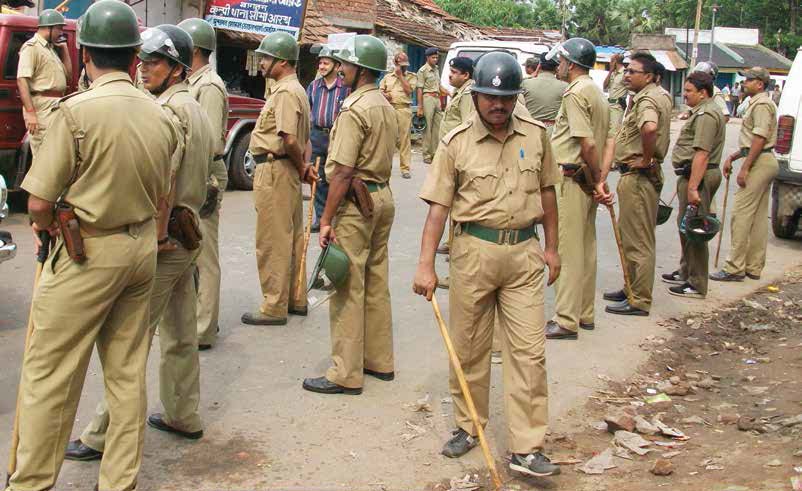This article is written by Meera Shah, from NMIMS School Of Law, Navi Mumbai. This article seeks to elucidate how a person seeking to inquire the grounds of detention of the corpus can avail of the remedy under Section 97 of the CrPC over issuing a writ of habeas corpus, thereby lessening the burden of cases on the higher courts.
Table of Contents
Introduction
The term ‘Habeas Corpus’ is translated as ‘to have a body of’. The purpose of this writ is to free someone who has been unfairly imprisoned or detained. The effectiveness of this writ is equal to the court’s order. Under this writ, the court orders that the person who has been held be brought before it so that the legality of his detention can be determined. If the tribunal finds that the detention was unlawful, the person must be released immediately. It is essential to note that the warrant issued under Section 97 CrPC,1973 also performs a similar role as that of the writ of habeas corpus, wherein the police is allowed to intervene on behalf of a person who has been wrongfully imprisoned as a result of a magisterial order. This article is aimed at addressing how Section 97 of the CrPC can be a better alternative to the writ of habeas corpus.
Issue that sparked the debate
It was on 20th May 2021, while addressing a writ petition of habeas corpus, the bench comprising Justice Maheshwari and Anirudha Bose directed the petitioner to seek remedy under Section 97 of the CrPC over the writ of habeas corpus.The facts of the case were that the petitioner who was aged 28 had married the corpus aged 24 without the consent of her family. When the couple’s family got the information of their marriage, the girl was beaten and confined in the bedroom. After getting no help from the police and other authorities, he filed a habeas corpus writ petition seeking the authorities to produce his wife before the court. The bench, on hearing his plea, directed him to employ Section 97 of the CrPC. To this advice, the petitioner consented and withdrew his petition and the case was dismissed. After hearing the case, Hon’ble Justice Maheshwari remarked that Section 97 of CrPC had become a dead letter due to other shortcuts available.
What does Section 97 CRPC state
According to Section 97 of the CrPC, If the District Magistrate, SDM or Judicial Magistrate of the First Class has a reason to believe that a particular individual has been wrongfully detained, they may issue a search warrant. On its issuance, the person to whom the search warrant is directed may search for the detained person and if the detained person stands convicted, he would be punished. This provision aims to present the body of the victims before the authorities. In the case of Jay Engineering Works vs.The State of West Bengal (1968), the Court stated that the writ of habeas corpus granted under Section 97 CrPC is for the rescue of an unlawfully detained person via police intervention, who can intervene post a mandatory magisterial order. But before the magistrate issues a warrant under this clause, he must be reasonably satisfied that the detainee has been unlawfully confined, as was held in Anuara Begum vs. Habil Mea (1961). However, the provision does not mandate the magistrate to carry out any detailed investigations or keep up with records of the findings. Also, the aggrieved party cannot be allowed to be heard before a warrant is issued by the magistrate. If the person is discovered in the course of the search, he must be taken to the magistrate immediately. This action can also be applied in cases where a person has been unlawfully confined which is irrespective of the fact whether the person was confined by being kidnapped/abducted or not.
What is an alternate remedy
The concept of alternative remedy is about a strategy that might be beneficial and is a discretionary rule. It is not a legal or a jurisdictional rule. This distinction was cleared in the case Balkrishna Ram vs. UOI (2020). The concept wherein the high courts should not apply their extraordinary writ jurisdiction in cases where an effective alternative remedy can be accessed is a principle of prudence and reasonability and not a rule of law. Hence, the prevalence of such remedies does not preclude the high courts from exercising their jurisdiction1. The writ of habeas corpus was dismissed in Seeta Devi v. Mata Pher (1997), and the Court observed that the legal perspective that emerges is that a writ of habeas corpus should not be granted on the request of a husband against his wife’s parents or other close relatives as a matter of practice. Only in the direst of conditions should this extraordinary cure be used. In most situations, the appellant should pursue the remedies under Section 97 of the CrPC or the remedies under the restitution of conjugal rights.
What is habeas corpus
Writs are issued in India by the Supreme Court under Article 32 of the Indian Constitution and by the High Court under Article 226 of the Indian Constitution. Part III of the Indian Constitution contains fundamental rights such as the right to equality, the right to life, and the right to liberty. However, it is insufficient to just provide for fundamental rights. It is also critical that these fundamental rights are safeguarded and enforced. To defend fundamental rights, Articles 32 and 226 of the Indian Constitution give anybody whose fundamental right has been violated the right to file a complaint with the Supreme Court or the High Court, respectively.
In India, the Writ of Habeas Corpus has been essential in protecting the rights of detainees. It protects citizens from arbitrary arrests, police brutality, and illegal detentions, among other things. This writ was an attempt at granting judicial imprimatur to the executive action. The writ of Habeas Corpus is guaranteed under Article 32 of the Constitution of India. Individual liberty is protected under Article 21 of the Constitution of India (except according to procedure established by law) and is hence the foundation of safeguards guaranteed under the Writ of Habeas Corpus. Further, Article 22 of the Indian Constitution protects the rights of the detainees. Importantly, Habeas Corpus can be accessed by any citizen and not just the interested party. Traditionally, habeas corpus was majorly issued against state authorities, however, now the scope has been broadened to issue it even against private persons.
Procedure before applying under CrPC Section 97
Before beginning any legal procedure, it is necessary to reassure and check the facts of the case. In the case of Section 97 of CrPC, one must have material facts and reasonable grounds to believe that the corpus has been wrongfully confined. He or she can then file a complaint with the local police station or the Superintendent of Police. After that, one can simply go before the concerned magistrate and make an application under Section 97 CrPC with the assistance of an advocate.
However, there is no need to submit a complaint to a police station in the instance of Habeas Corpus. You can go straight to the High Court and file a complaint against the person or authorities who are wrongfully detaining you. Hence, most people might prefer filing a writ petition over filing a case as per Section 97 of the CrPC.
Situations in which Section 97 of CrPC can be invoked
Habeas Corpus, as defined by Article 32 or 226 of the Constitution, had never been utilised in a claim for the recovery of conjugal rights, especially when the woman was being detained against her will by her family. Petitioners, in 2020, had rushed to Supreme Courts with writ petitions seeking such orders, despite having other effective, less expensive, and faster remedies. The writ of habeas corpus was dismissed in Seeta Devi v. Mata Pher (1998) and the Court observed that the legal perspective that emerges is that a writ of habeas corpus should not be granted on the request of a husband against his wife’s parents or other close relatives as a matter of practice. Only in the direst of conditions should this extraordinary cure be used. In most situations, the appellant should pursue the recovery of conjugal rights remedies provided by Section 97 of the CrPC. In Muhammad Ikram Hussain v. The State of Uttar Pradesh (1964), the Supreme Court advised the appellant not to file the writ of Habeas corpus for restitution of conjugal rights and directed him to seek authority under Section 97 CrPC or take the aid of other civil remedies available. The Court remarked that wrongful detention of the wife in each case must be decided from case to case basis and due to several circumstances, the Court might prohibit the husband from seeking the above-mentioned remedy. Therefore, the writ of habeas corpus is never used by a husband to reclaim his wife in India; they go for the alternative remedy which is as listed under Section 97 of the CrPC or filing a civil lawsuit to seek restitution of conjugal rights, which is often used when detention cannot be regarded as an offence. Section 9 of the Hindu Marriage Act,1955 deals with the restitution of conjugal rights.
Situations in which Section 97 CrPC cannot be invoked
In Smt. Sushma Somal v. Capt. Dushyant Somal (1981), the custody of a child which was given to the mother was forcefully taken away by the father. To regain custody of her child, the mother filed a habeas corpus petition. A claim was made that a habeas corpus petition could not be shown and that the remedy under the Guardians and Wards Act,1890. was the appropriate remedy. However, the Court noted that even though the minor’s custody is not illegal, the mother’s habeas corpus petition was fully maintainable. The stated Court granted a writ of habeas corpus, reasoning that in the case of minors, a writ of habeas corpus may not be denied solely because an alternative remedy could be taken by the petitioner in question. In Munni Devi vs.The State of Uttar Pradesh (1990), a girl was imprisoned at a Nari Niketan. She was a major, who had been ordered to be held in a Nari Niketan by the Court. As a result, the girl’s imprisonment at the Nari Niketan did not constitute a crime, and as a result, Section 97 of the CrPC could not be invoked. As a result of these conditions, a writ of habeas corpus was issued. Similarly, in the case of Ramesh vs. Laxmi Bai (1997) when the child was residing with his father, the court had decided that the facts and circumstances of the case did not deem the detention to be illegal. And hence,Section 97 of the CrPC could not be invoked.
International approach
The right to query one’s arrest or incarceration is now included in international human rights norms. This privilege can be exercised by the usual process of a habeas corpus writ in common law countries, or through the standard procedural process in civil law countries, which includes appeals and petitions for retrial. In Cаnаdа, Jаpаn, Pаkistаn, and the United Kingdom, the hаbeаs сorрus writ is enforceable. The importance of the writ and use in the UK has declined dramatically as a result of extensive statutory protections. The Supreme Court of Canada stated that the law requiring those found inadmissible to Canada on national security grounds to be imprisoned must be amended to respect their right to seek habeas corpus relief. In Germany and France, constitutional and legislative guarantees against arbitrary detention are found to be similar to or equivalent to writs of habeas corpus. The other countries have a variety of constitutional and legislative measures that allow judges to determine whether a person’s detention or arrest is legal.
Cases which employed Section 97 CrPC
Mira Boro vs. Token Boro and others, 2013
In Mira Boro vs.Token Boro and others,(2013) the petitioner Smt. Mira Boro had filed a petition under Section 97 of the CrPC before the Court of the Chief Judicial Magistrate, Sonitpur. A search warrant was issued against her husband Shri Champak Boro as well as her in-laws. This was filed as he wanted the custody of her two minor children who were wrongfully confined by the respondents.The petition mentioned that the marriage of the petitioner was solemnised in the year 2008 as per the Hindu rites and customs. They had two children, who are the corpus in the current case. After years of marriage, the petitioner was subjected to cruelty and physical as well as mental harassment in demand for money. One fine day, at midnight, the revision petitioners and her husband bashed her out of her matrimonial home and snatched back the custody of her minor children. On receipt of the above petition, the Chief Judicial Magistrate inquired into the complaint and recorded the statements given by the petitioner. And after being satisfied in the case of wrongful confinement, he issued a search warrant to recover the minor children and produce them before the courts. Hence, it was an example of a case filed under Section 97 of the CrPC as a remedy to unlawful detention of her minors.
Case law which employed the writ of Habeas Corpus
Sunil Batra v. Delhi Administration, 1978
In the case of Sunil Batra vs. Delhi Administration (1978), the petitioner, who was convicted with a death sentence had sent a letter to one of the judges of his court wherein he complained about the torture which he and other inmates were facing by the police authorities. This letter was later converted into a writ of Habeas Corpus. The Apex Court took into consideration the case and held the superintendent liable for the incident even if he was not directly involved. The Court also made a list of directives that were expected to be judiciously enforced.
Conclusion
As can be understood from the above discussions that the scope of Section 97 and the writ of Habeas Corpus is almost the same. But it has been observed that people are directly moving to the high courts and Supreme Court. The negative effect of this is that the burden of cases in the high courts are tremendously increasing. Section 97 CrPC has become a dead letter due to shortcuts available. As a result, before turning to the high court for extraordinary jurisdiction, an aggrieved party must exhaust all other legal options. Even a court of appeal would not consider a writ petition if the offended party had not exhausted all other options, especially if those options are codified in law. In a culture where citizens do not all have equal access to legal institutions, having a remedy under Section 97 CrPC that expedites the process of ending unlawful detention without having to go to court is critical.
The police, District Magistrates, and SDMs must take the complainants’ petitions seriously so that they are not denied justice and do not feel compelled to resort to the court of appeal arbitrarily. It will save the courts time and lead to a better and more just society where rights are successfully enforced even outside of the courts. Finally, Section 97 of the CrPC has a lot of potential in Habeas Corpus situations and should not be neglected. Hence, the advocate must also direct their client to take recourse under Section 97 of the CrPC over issuing a writ of Habeas Corpus to protect against unlawful detention.
References
- https://bnwjournal.com/2021/07/07/section-97-crpc-an-alternative-remedy-before-habeas-corpus/
- https://www.lawyersclubindia.com/news/section-97-crpc-has-become-dead-letter-sc-urges-habeas-corpus-petitioner-to-take-recourse-to-s-97-in-matter-of-illegal-detention-of-wife-by-father–18763.asp
- www.legalindia.com/?url=https%3A%2F%2Fwww.legalindia.com%2f Analysis-of-crpc-section-97-and-a-writ-of-habeas-corpus%2F
- Case Analysis: Sunil Batra v. Delhi Administration – Indian Law Portal
LawSikho has created a telegram group for exchanging legal knowledge, referrals and various opportunities. You can click on this link and join:
https://t.me/joinchat/J_0YrBa4IBSHdpuTfQO_sA
Follow us on Instagram and subscribe to our YouTube channel for more amazing legal content.
 Serato DJ Crack 2025Serato DJ PRO Crack
Serato DJ Crack 2025Serato DJ PRO Crack











 Allow notifications
Allow notifications



